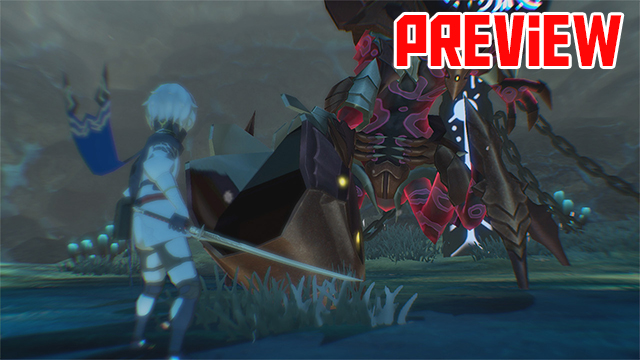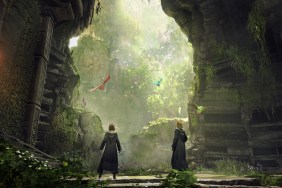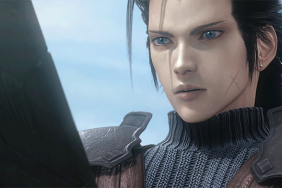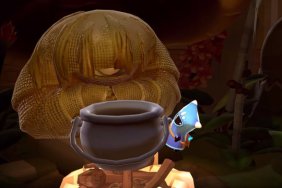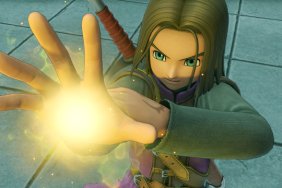What if when you cried over a lost loved one, you prevented them from being reincarnated, trapping them in a miserable limbo? For all its borderline-chibi trappings, Tokyo RPG Factory’s Oninaki opens by posing this dark question, soon finding ways to weave in darker discussions of suicide and dead children. Pair this with the death of the team’s reliance on turn-based combat, and its twice-derivative, retro role-playing formula was finally enough to catch my attention for the first time.
Speaking of first times, this isn’t publisher Square Enix’s first time flirting with the macabre, as 2001’s Final Fantasy X 2016’s I am Setsuna, this team’s debut title, stars a young girl destined to kill herself to save the world. Thankfully, if Oninaki’s first hour is any indication, Tokyo RPG Factory strives to borrow primarily from the tone and aesthetics of past Square RPGs instead of again recycling whole gameplay systems.
ALSO: Nintendo Switch Lite is the perfect 3DS successor for kids
Setting up a world where reincarnation is an accepted fact, the prologue doesn’t bother with ambiguity. “It is grief of death which shackles the living, and causes the dead to stray,” says the introductory text. “Indeed, there is no greater affront to reincarnation.” Cut to protagonist Kagachi vowing not to cry over his parents’ bodies during their wake. After a surely foreshadowing encounter with the previously mentioned young girl’s ghost, we’re ushered forward to when Kagachi has become a Watcher of the Veil Watch, which is an individual charged with guiding lost souls toward reincarnation.
Oninaki Preview | RPG with a dash of MOBA
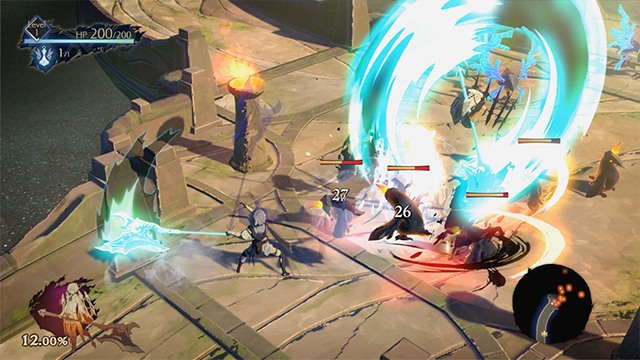
After that brief intro, Oninaki makes the wise choice to hurry toward its first fight, quickly establishing its turn toward a hack-and-slash style instead of following Setsuna and 2017’s Lost Sphear’s shameless attempts at lifting from Chrono Trigger’s combat system. In an almost MOBA-like extension of Lost Sphear’s freely aimable, area-of-effect attacks, players are given real-time control over Kagachi and his equippable Daemons, which each offer unique ways to assault enemies.
“Gameplay wise, these Daemons fulfil the roles of jobs in a traditional RPG, and you can switch between them in real-time during battle,” says director Atsushi Hashimoto in an FAQ provided by Square Enix. Aisha, Kagachi’s first Daemon, can send out damage in short, forward-facing waves perfect for crowd control. I later unlocked Zaav, whose more powerful leaping attack (which can double as a dodge) was the perfect way to safely chip away at the first boss’ health bar.
None of the early enemies require much differentiation in terms of strategy, and the damage-spongiest are unfortunately necessary to kill in order to progress. Taking out these larger enemies reverses the characters’ “Veil Blind” state, allowing them to traverse the Beyond. The Beyond is another dimension to the world as it presented in two states and is mainly a Link to the Past-esque means of solving simple puzzles. Letting the player freely switch between these realms helps alleviate some fear of this becoming tedious as being locked into one realm could get annoying.
Real-time fights and the freedom to aim your powers make for a more novel, active experience in the context of the first hour. Having played only those 60 minutes, with no hands-on sense of how new Daemons might keep combat fresh, it’s easy to imagine these fights eventually turning stale if these helpers are pretty shallow. Switching between Zaav and Aisha alone added an engaging layer of strategy, but it’s tough to gauge how meaningful these mid-battle choices will be without a sense of Oninaki’s difficulty curve or how they’ll be paced out. It will be hard to care as much about finding new Daemons if early-game pairings stay useful in every fight. Thankfully, the variety implied in this trailer is enough to keep stay reasonably hopeful.
Oninaki Preview | A bright story filled with death
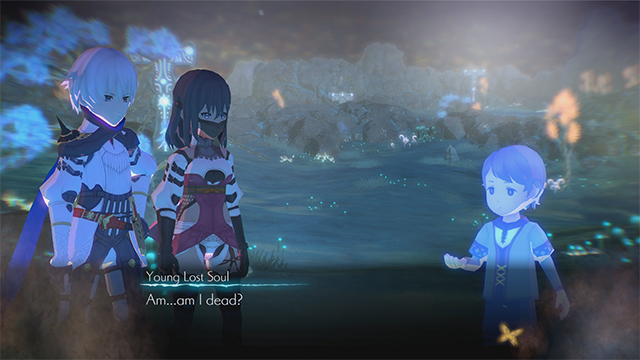
In a world where reincarnation and the afterlife exist with such clear rules, it’s hard to tell how harshly we’re meant to judge Kagachi’s cold-heartedness toward the dead. Constant chides from Mayura (his scythe-wielding partner) about his insensitivity toward lost souls make this feel like a setup built to be reversed, but it’s intriguingly tough to gauge how the game feels about its own detached take on death.
The main thrust of the prologue sees the pair seeking the lost soul of a young boy, apparently held back from peaceful reincarnation by the grief of a loved one. The two Watchers grant his wish to see his parents again, fully informing his mother and father of his presence when visiting their home. With the boy’s mom and dad implicated in his inability to reincarnate, his mother admits she cannot bear to live without him. Within seconds, his father begrudgingly accepts what this means. Square Enix asked to keep the following events a secret, but it made my jaw drop, despite how logical and fitting the outcome was.
Cue the title card, and Oninaki begins here in earnest. A steady stream of new characters, quests, and an introduction to the world map follow, reminding that outside of battles, the moment-to-moment experience might not differ much from other old-school Square adventures. A wave of expository dialogue from NPCs teases a cult that performed a mass suicide “unauthorized” by the the Veil Watch, a monster called the Night Devil that prevents people from reincarnating, and a method of assisted suicide for the elderly called “The Tithing.” Most story beats are communicated by characters from the expectedly expressionless top-down view, though occasional cutscenes and a darker, more cel-shaded art style make this more visually compelling than Tokyo RPG Factory’s previous releases.
Even if Oninaki fully subverts its shocking beginning and reverts back into known patterns, the attention-grabbing introduction deserves praise especially from a studio mainly known for being derivative. In the aforementioned FAQ, creative producer Takashi Tokita estimates that an average playthrough will take 30 hours, so there could be plenty of room for the writing and fighting to wander down less interesting paths. With an August 22 release date set for PS4, PC, and Switch, it won’t take long to find out. In the meantime, anyone wanting their own look at the game’s surprisingly effective opening hour can download the demo we played right now (or at least sometime on July 23).
